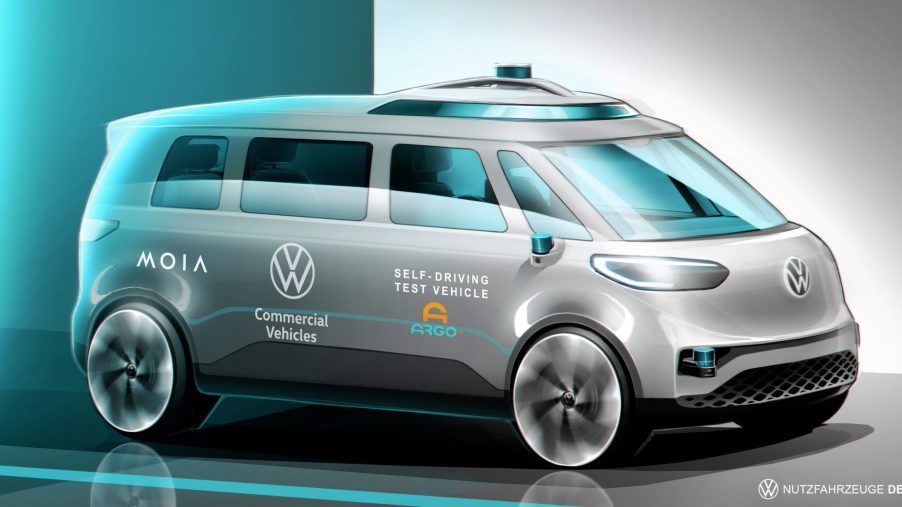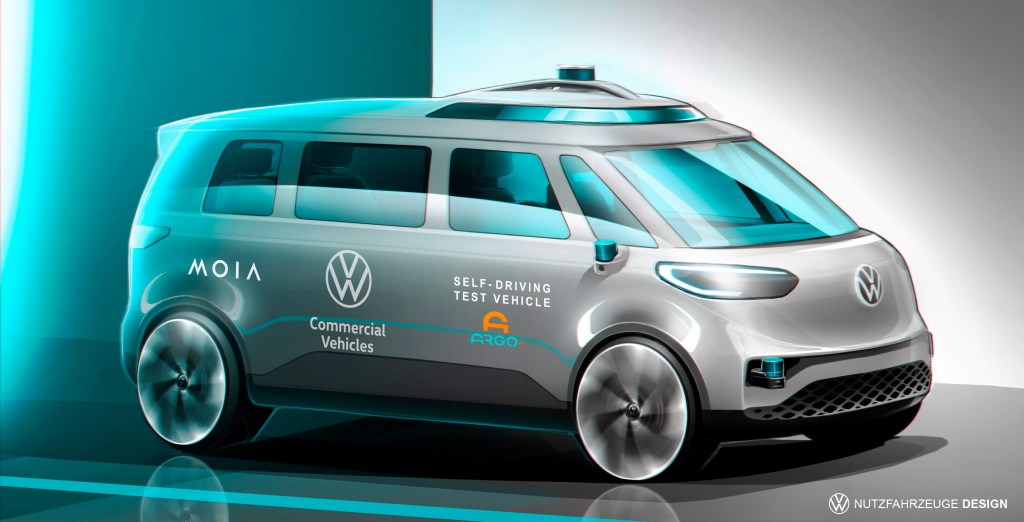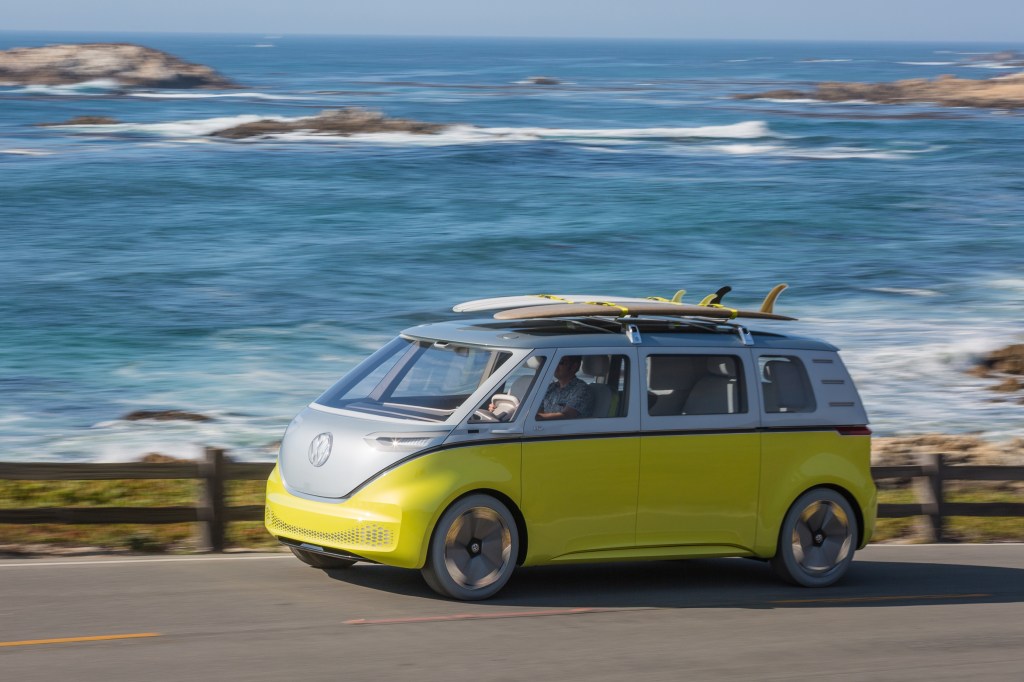
Volkswagen Created an Autonomous Taxi With an ID. BUZZ Electric Van
The Volkswagen ID. BUZZ combines classic styling cues from the iconic VW Bus with an electric powertrain and autonomous driving capabilities. The ID. BUZZ debuted with much fanfare back in 2017, as it earned multiple concept car awards. Volkswagen eventually plans on releasing a production version of the ID. BUZZ, but it has been a slow process. The German automaker intends to make several versions of the van. Recently, VW created an autonomous taxi version of the ID. BUZZ.
VW ID. BUZZ autonomous taxis could help reduce traffic congestion in cities
The ID. BUZZ autonomous taxi prototype is a collaboration between Volkswagen Commercial, VW subsidiary MOIA, and Argo AI. The motivation behind the prototype is to show how an autonomous taxi version of the ID. BUZZ could help reduce inner-city traffic congestion. This will be achieved by working with MOIA on an autonomous commercial ride-sharing service.
The ride-sharing service for the ID. BUZZ taxis will reduce traffic congestion in two ways. For one, people will drive less if they utilize the ride-sharing service. Also, with the autonomous driving capability, the ID. BUZZ can drive more efficiently than a human driver.
MOIA already laid the groundwork for the VW ID. BUZZ taxi ride-sharing service, for it already implemented an eclectic vehicle ride-sharing service using human drivers. The aim is to offer a ride-sharing service with autonomous vehicles in 2025. MOIA will first start the autonomous vehicle ride-sharing service in Hamburg, Germany, and eventually, offer it to the entire world.
How does the autonomous driving system work in the VW ID. BUZZ taxi?
The VW ID. Buz taxi has a highly advanced autonomous driving system, which was created by Argo AI. It generates a 360-degree view of its surroundings using radar, lidar, and cameras. Lidar is a state-of-the-art technology that uses lasers to determine the range of objects. The autonomous system also predicts the movements of other cars, bicycles, and pedestrians.
The ID. BUZZ analyzes all of this information from the 360-degree view to direct its steering, braking, and electric motors. The intent is for the ID. BUZZ taxi to drive both safely and like a natural driver.

The system is incredibly precise. It can detect objects from distances as far away as a quarter-mile. Also, using the proprietary Geiger-mode technology, it can detect microscopic particles of light. This is very advantageous for generating a highly detailed view of its surroundings, as well as detecting dark objects and vehicles.
What’s the range of the VW ID. BUZZ taxi?

Volkswagen didn’t give any details about the range of the ID. BUZZ taxi. However, it likely has a range that is at least as high as the I.D. BUZZ concept, which is 270 miles. The I.D. BUZZ is powered by two electric motors, which produce an output of 201 hp. Also, the electric van can accelerate quickly, with a 0-60 mph time of around five seconds.


